Refineries use a variety of complex equipment to process crude oil and produce final products. Refinery equipment is generally divided into two main categories: heavy equipment and light equipment. These equipments are used for various processes such as separation, cooling, heating, and purification. This article explores different types of refinery equipment.
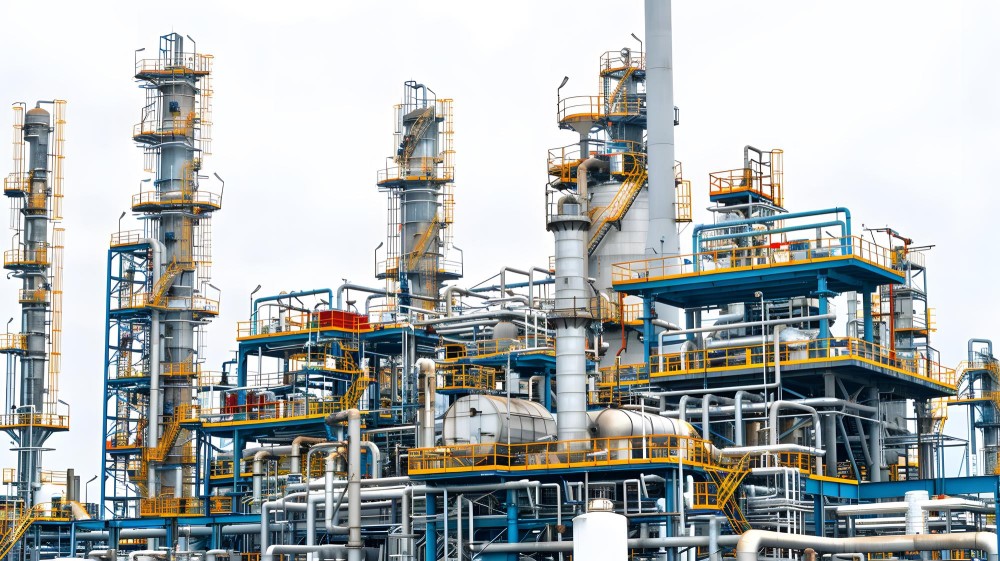
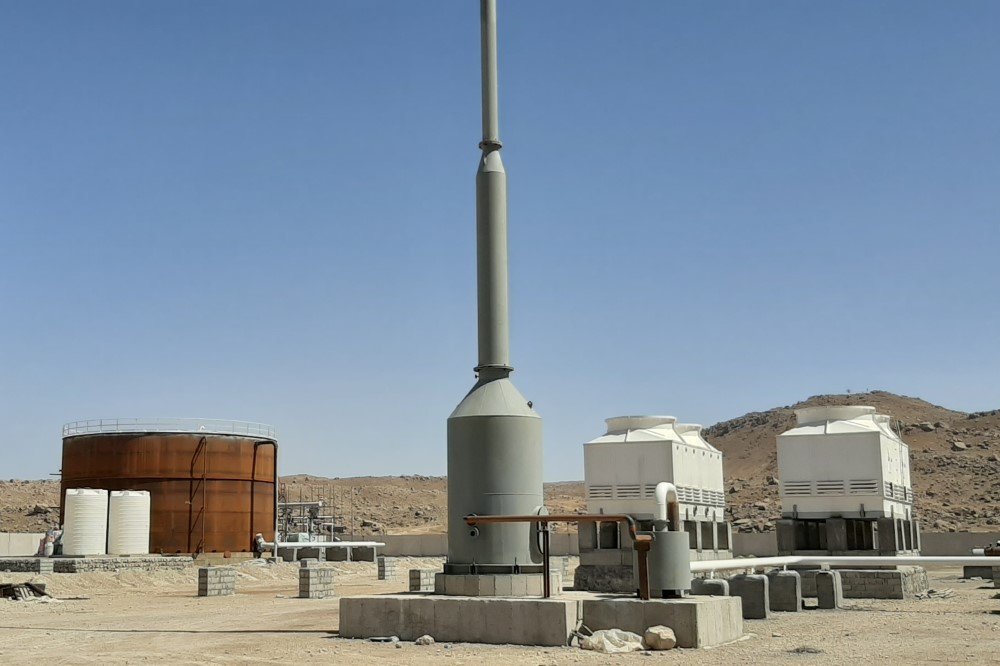
Petroleum flares are used to burn off waste gases produced in refining processes. These gases often contain hydrocarbons and other chemical compounds that must be safely burned to prevent environmental pollution. Petroleum flares are designed to burn waste gases completely and safely and include components such as flare tips, bodies, pressure and temperature control systems, and flame monitoring systems.
Petroleum flares used in oil and gas refineries are divided into several categories, each with its own applications and features. Below is an introduction to different types of petroleum flares:
This type of flare uses an open flame to burn off waste gases. It is used in emergency situations and for burning large volumes of gas.
Smokeless flares are used to burn gases without producing visible smoke. They are employed in locations where reducing visual pollution is important.
This type of flare is used to burn hydrocarbon liquids. They are used when waste gases contain liquids as well.
Refinery flares help reduce environmental pollution, safely burn off waste gases, and minimize the risk of explosions and fires. However, these flares generate a lot of heat and require advanced systems for control and monitoring.
Petroleum filters are used to remove suspended particles and impurities from various fluids in refining processes. They play a crucial role in improving the quality of final products and increasing equipment efficiency.
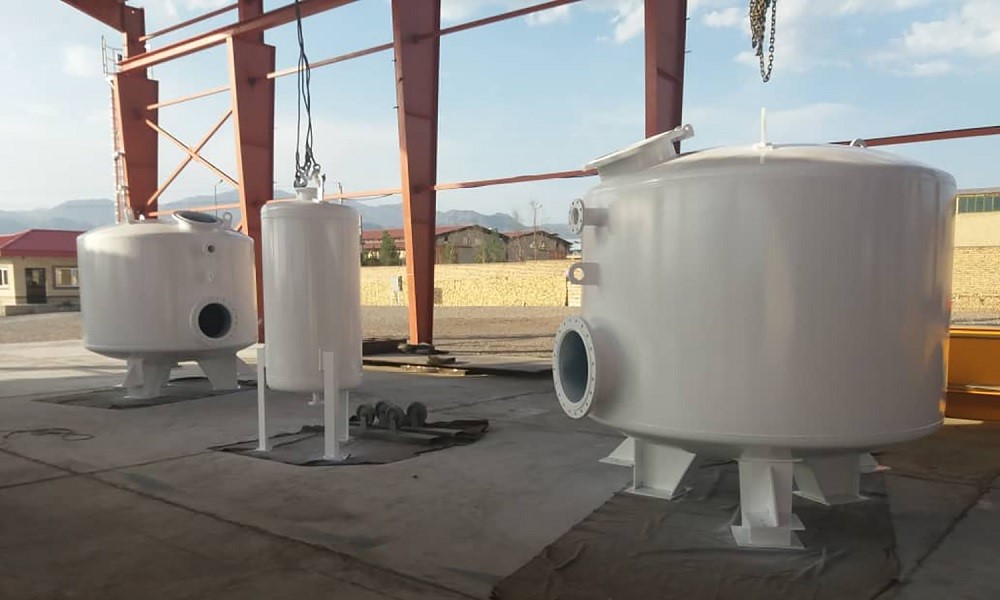
Petroleum filters come in various types, including cartridge filters, bag filters, and self-cleaning filters. Each type has specific applications in the oil and gas industry.
Features: Replaceable and available in different capacities.
Applications: Removing suspended particles from low-flow fluids.
Features: Simple design and reusable.
Applications: Removing suspended particles from high-flow fluids.
Features: Low maintenance and automatic cleaning capability.
Applications: Removing suspended particles from high-flow and highly contaminated fluids.
Petroleum filters help improve the quality of final products, increase equipment efficiency, and reduce maintenance costs. However, they require periodic replacement or cleaning, and the high initial cost of some filter types may pose limitations.
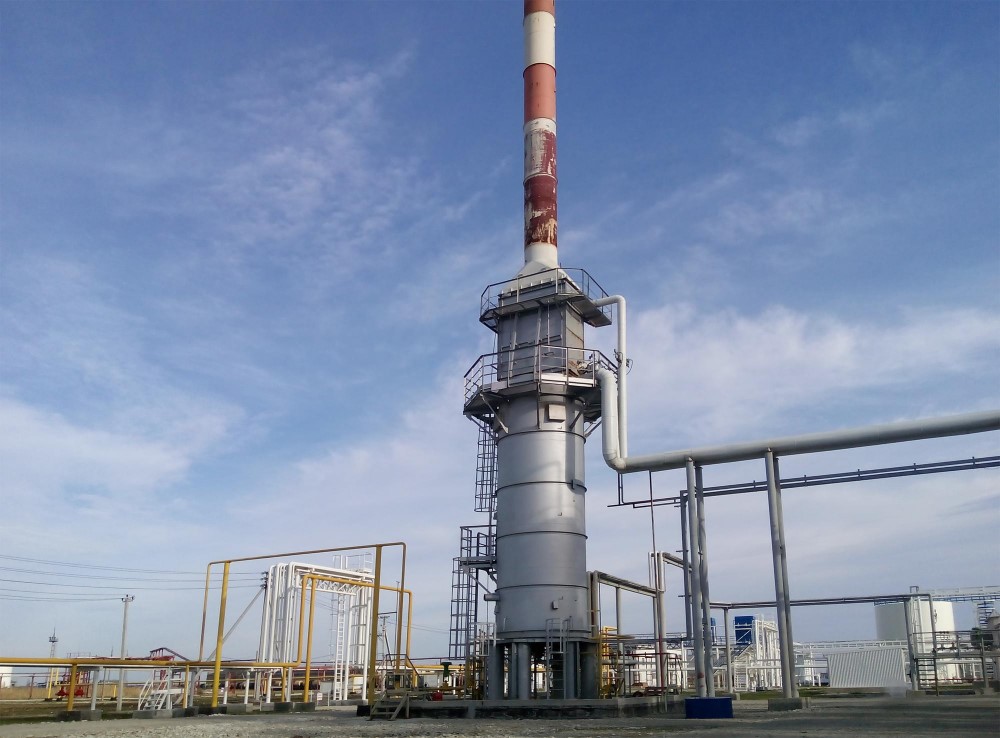
Industrial furnaces are used for heating and performing various thermal processes in the oil and gas industry. They are designed to heat raw materials, perform thermal cracking of hydrocarbons, and generate heat for various processes. The types of industrial furnaces include:
The types of industrial furnaces include the following:
Features: Use natural gas as fuel.
Applications: Continuous and efficient heating in refineries and petrochemical industries.
Features: Use electricity to generate heat with precise temperature control.
Applications: Used in processes that require accurate temperature control.
Features: Use oil as fuel.
Applications: Generate heat for refining processes and heavy industries.
Industrial furnaces enhance the efficiency and productivity of thermal processes and can produce very high temperatures. However, the initial installation and maintenance costs are high, and they require advanced control and monitoring systems.
Heat exchangers in refineries are used to transfer heat between two or more fluids without mixing them. They play a crucial role in energy efficiency and reducing operational costs. The characteristics of these converters include high efficiency in heat transfer and reduced energy consumption. Heat exchanger applications in refineries include cooling hot products, heating cold feeds, and recovering heat from process streams.
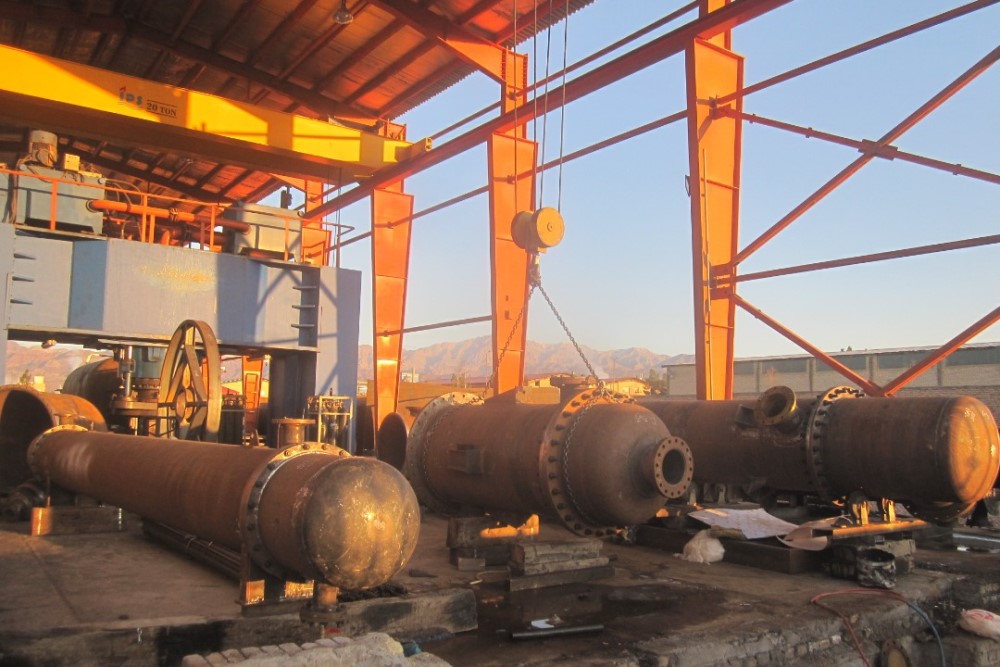
Heat exchangers are used in different types, which include the following:
Features: Simple design and capable of withstanding high pressures.
Applications: Used in cooling and heating processes in refineries.
Features: High efficiency and compact size.
Applications: Used in processes requiring rapid and effective heat transfer.
Features: Use air as the cooling medium.
Applications: Cooling processes in areas with limited access to water.
Heat exchangers contribute to energy savings and increased efficiency and can be used in various operational conditions. However, they require regular maintenance and have high initial installation costs.
Pumps are used to move liquids in refineries and have different types such as centrifugal, diaphragm and piston. The characteristics of the pumps include high efficiency, resistance to corrosion and the ability to move liquids with different viscosities. The main applications of pumps include the transportation of crude oil, refined products and chemicals in various refinery processes.
The types of pumps used in the oil, gas and petrochemical industries are:
Features: High efficiency and capable of handling high flow rates.
Applications: Used for transferring crude oil, refined products, and chemicals.
Features: Corrosion-resistant and capable of handling viscous fluids.
Applications: Used for transferring chemical and sensitive fluids.
Features: Capable of handling high-pressure fluids.
Applications: Used in processes requiring high pressure.
Pumps enhance the efficiency and productivity of refining processes and allow for the transfer of fluids with various properties. However, they require regular maintenance and have high operational costs.
Compressors are used to compress gases in refineries. The characteristics of compressors include high efficiency, the ability to compress gases to high pressures, and resistance to corrosion. The main applications of the compressor include compression of process gases, natural gas and other gases used in refineries.
Compressors are used in different types such as centrifugal, piston and rotary, which have the following features and applications:
Features: High efficiency and capable of compressing gases at high flow rates.
Applications: Used for compressing process gases and natural gas.
Features: Capable of compressing gases at high pressures.
Applications: Used in processes requiring high pressure.
Features: Simple design and corrosion-resistant.
Applications: Used for compressing sensitive and chemical gases.
Compressors improve the efficiency and productivity of refining processes and allow for the compression of various gases. However, they require regular maintenance and have high operational costs.
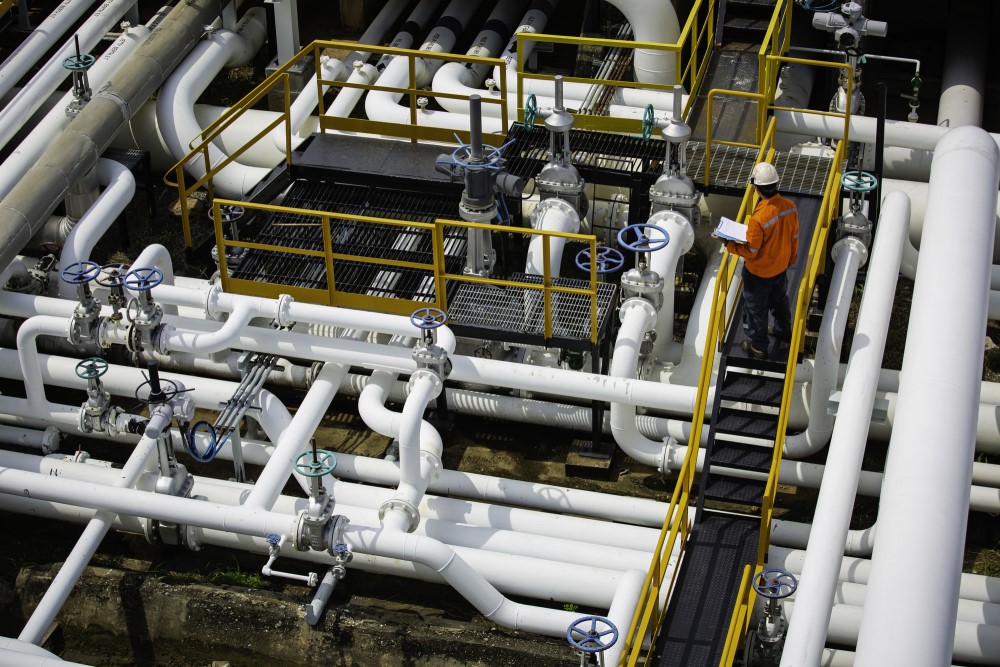
Piping and transfer equipment in refineries are used for transporting raw materials, final products, and chemicals between different processing units. These equipments play a crucial role in the optimal and safe operation of refineries and include various types of pipes, pumps, valves, and ancillary equipment.
Types of transmission equipment and pipes in the oil, gas and petrochemical industries are:
Features: Made from various materials such as carbon steel, stainless steel, and plastic.
Applications: transporting crude oil, refined products, water, chemicals at different temperatures, pressures.
Features: Control fluid flow, adjust pressure, and open or close flow paths.
Applications: Used in piping systems to precisely control refining processes.
Features: Includes elbows, tees, reducers, and flanges for connecting and changing the direction of pipes.
Applications: Provides flexibility and allows for changing the flow path in piping systems.
Features: Includes centrifugal, diaphragm, and piston pumps with high efficiency.
Applications: Used for transferring various materials between process units and storing in tanks.
Features: Remove suspended particles and impurities from fluids during transfer.
Applications: Improve fluid quality and prevent damage to equipment.
Transfer and piping equipment enhance the efficiency and productivity of refining processes, providing safe and effective material transport. However, their installation and maintenance are costly, and they require meticulous monitoring and regular upkeep to prevent leaks and potential failures.
Chemical reactors are used for conducting chemical reactions under controlled conditions in refining processes. These reactors are designed to withstand high temperatures and pressures and provide precise control over reaction parameters. Features include high resistance to corrosion and high temperatures, and the ability to handle complex reactions. Major applications of chemical reactors include producing petrochemical products, specific petroleum derivatives, and converting hydrocarbons into final products.
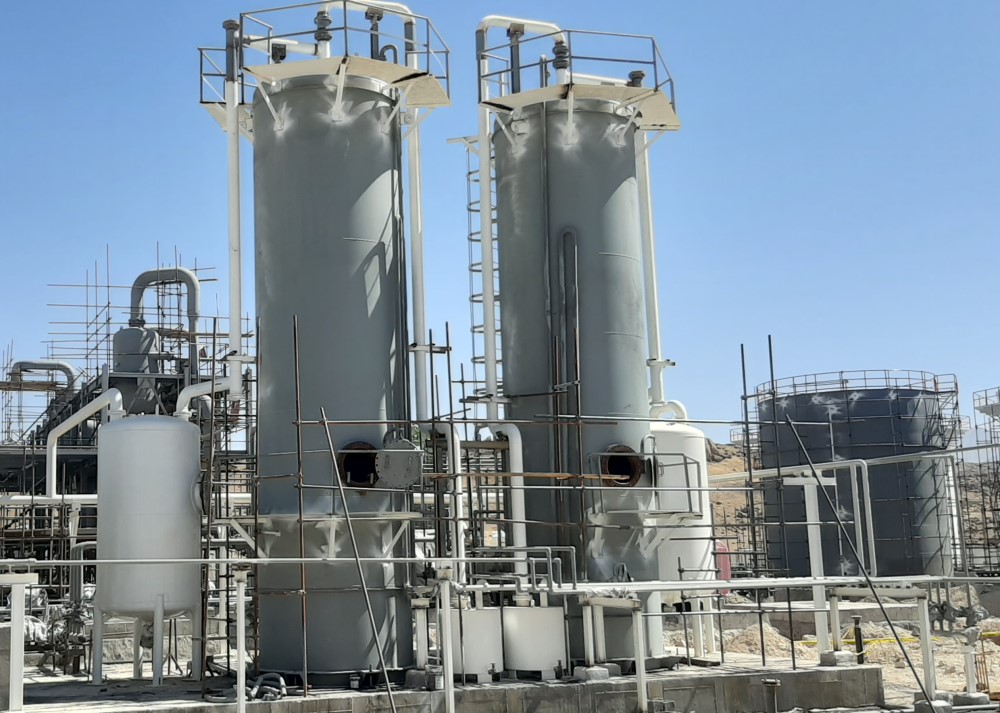
Distillation columns are vital equipment in refineries used to separate different components of crude oil based on their boiling points. These columns are tall and cylindrical, featuring trays or packings that increase the contact area between vapors and liquids. Key features of distillation columns include high precision in separation and the ability to operate at various temperatures and pressures. Their main applications include separating gasoline, diesel, fuel oil, and other petroleum products.
Controllers and sensors are used for monitoring and controlling various process parameters in refineries. Types of sensors include pressure gauges, thermometers, and level sensors. Features of controllers and sensors include high accuracy, real-time monitoring and control capabilities, and resistance to harsh operating conditions. Main applications of these devices include monitoring temperature, pressure, liquid levels, and other critical process parameters.
Summary
Refineries, as centers for processing crude oil and producing petroleum products, rely on a diverse range of equipment to perform their complex and critical operations safely and efficiently. Key equipment in refineries includes:
These pieces of equipment play a crucial role in improving refinery productivity, safety, and efficiency while reducing operational costs and enhancing product quality. Proper selection and maintenance of this equipment enable refineries to achieve optimal and safe performance.
Sources